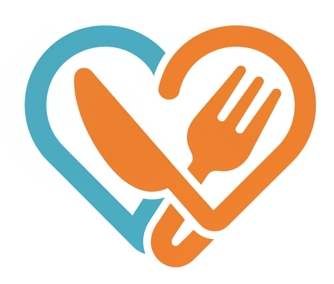Creating a personalized diet plan is a powerful way to take control of your health, achieve your goals, and develop sustainable eating habits. Whether your focus is weight loss, muscle gain, managing a medical condition, or simply eating healthier, tailoring a diet to suit your unique needs and preferences is essential. This comprehensive guide will walk you through the process, ensuring you have the knowledge and tools to succeed.

1. Define Your Goals
Before starting, clarify what you want to achieve with your diet plan. Common goals include:
- Weight loss: Reducing calorie intake while maintaining balanced nutrition.
- Muscle gain: Increasing protein and calorie intake to support strength training.
- Improved health: Managing conditions like diabetes, high blood pressure, or cholesterol.
- General wellness: Eating to feel energized and maintain a balanced lifestyle.
2. Assess Your Current Eating Habits
Take a close look at your current diet to understand what works and what doesn’t. Use a food diary or tracking app to log everything you eat for a week. Pay attention to:
- Calorie intake
- Macronutrient balance (carbs, proteins, fats)
- Meal timing
- Snacking habits
- Hydration levels
3. Understand Your Nutritional Needs
Your nutritional needs depend on factors like age, gender, weight, activity level, and health goals. Use tools like online calorie calculators to determine your:
- Basal metabolic rate (BMR): The number of calories your body needs at rest.
- Total daily energy expenditure (TDEE): Calories burned through daily activities and exercise.
Customize your macronutrient ratio based on your goals:
- Weight loss: Higher protein and moderate carbs.
- Muscle gain: Higher protein and carbs.
- General health: Balanced macronutrients.
4. Plan Balanced Meals
A well-rounded diet includes a variety of foods to provide essential nutrients. Aim to include:
- Proteins: Chicken, fish, tofu, beans, eggs.
- Carbohydrates: Whole grains, fruits, vegetables.
- Healthy fats: Avocados, nuts, seeds, olive oil.
- Micronutrients: Vitamins and minerals from colorful fruits and vegetables.
- Hydration: Drink plenty of water and limit sugary drinks.
Sample Meal Plan Framework:
- Breakfast: A protein smoothie with spinach, banana, almond milk, and protein powder.
- Snack: Greek yogurt with berries and chia seeds.
- Lunch: Grilled chicken salad with quinoa, mixed greens, and olive oil dressing.
- Snack: A handful of almonds and an apple.
- Dinner: Baked salmon, roasted sweet potatoes, and steamed broccoli.
- Dessert: Dark chocolate or a small portion of fruit.
5. Address Dietary Restrictions and Preferences
Personalization means adapting the plan to fit your lifestyle. Consider:
- Allergies: Substitute gluten, dairy, or nuts with alternatives.
- Cultural or religious practices: Incorporate foods that align with your traditions.
- Taste preferences: Choose foods you enjoy to make the plan sustainable.
- Lifestyle: Prepare quick meals if you have a busy schedule.
6. Practice Portion Control
Understanding portion sizes is crucial for managing calorie intake. Use these tips:
- Measure food with cups or a kitchen scale.
- Use your hand as a guide: palm-sized protein, fist-sized carbs, thumb-sized fats.
- Avoid oversized servings and eat slowly to recognize fullness.
7. Incorporate Physical Activity
Your diet plan should complement your exercise routine. Match your caloric intake and macronutrient ratios to your activity level:
- Low activity: Focus on nutrient-dense, lower-calorie foods.
- Moderate activity: Increase carbs for sustained energy.
- High activity: Ensure adequate protein and calorie intake for recovery.
8. Track Your Progress
Monitor your results regularly to ensure your plan is working. Adjust as needed based on:
- Weight changes
- Energy levels
- Physical performance
- Overall well-being
Tools for Tracking:
- Food tracking apps like MyFitnessPal or Cronometer.
- Fitness trackers for monitoring exercise and calorie burn.
- Regular check-ins with a nutritionist or coach.
9. Stay Flexible and Adaptable
A personalized diet plan is not static. Life circumstances, health conditions, and goals evolve, so your plan should too. Be prepared to:
- Adjust calorie intake for weight plateaus.
- Modify macronutrient ratios based on activity changes.
- Experiment with new foods to prevent boredom.
10. Seek Professional Guidance
For complex health conditions or specific goals, consult a registered dietitian or nutritionist. They can provide personalized advice and help fine-tune your plan.
Common Mistakes to Avoid
- Being too restrictive: Extreme diets are hard to sustain and can lead to nutrient deficiencies.
- Skipping meals: Regular eating patterns maintain energy levels and prevent overeating.
- Neglecting hydration: Drinking enough water is vital for metabolism and overall health.
- Ignoring feedback: Listen to your body and adjust based on hunger, energy, and satisfaction.
Disclaimer: This article is for informational purposes only and does not constitute medical advice. Always consult a healthcare professional before starting a new exercise or wellness routine
Conclusion
Creating a personalized diet plan empowers you to take control of your health and achieve your goals. By understanding your nutritional needs, planning balanced meals, and staying flexible, you can develop a sustainable approach to eating. Remember, the key to success lies in consistency, adaptability, and enjoying the journey toward better health.







